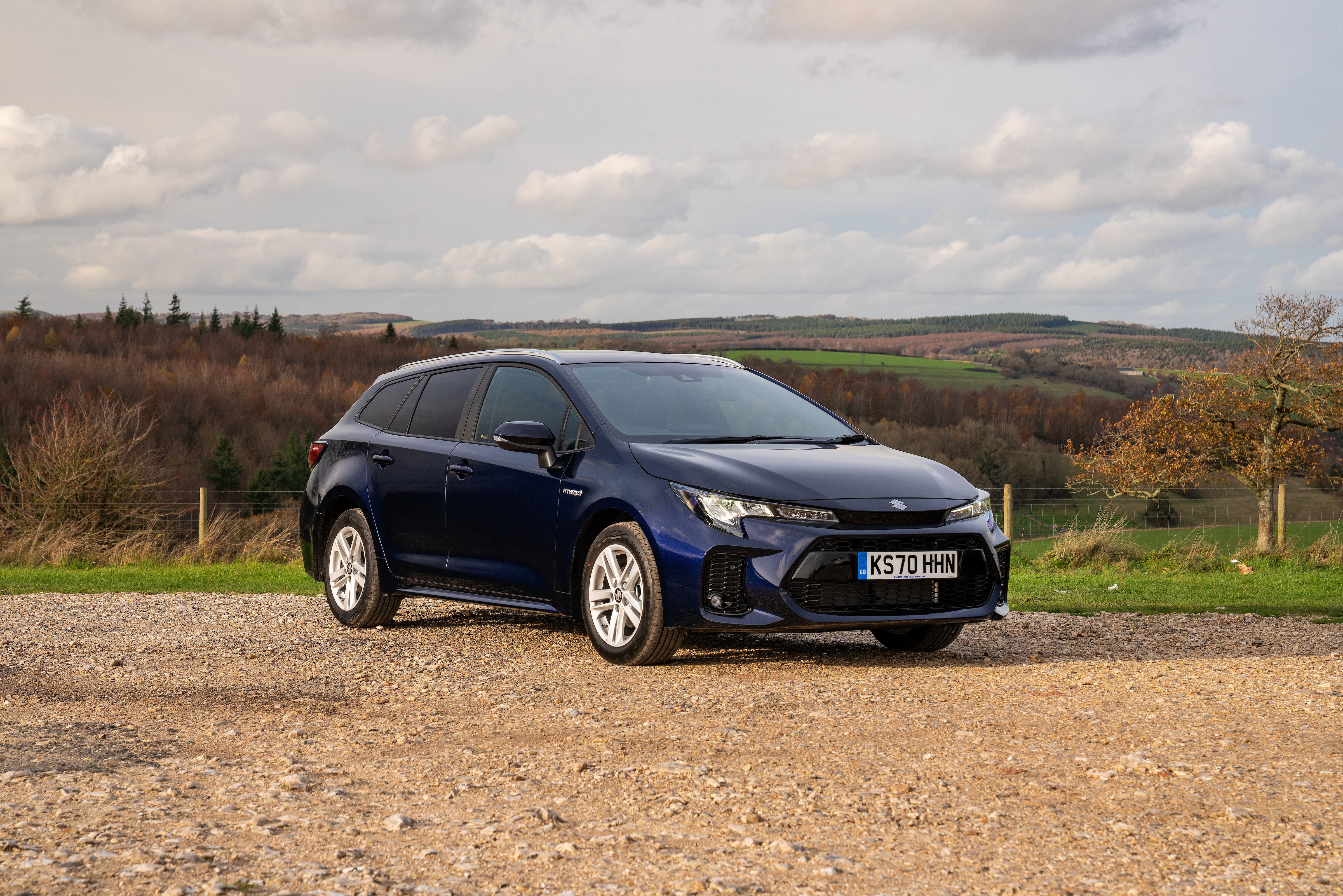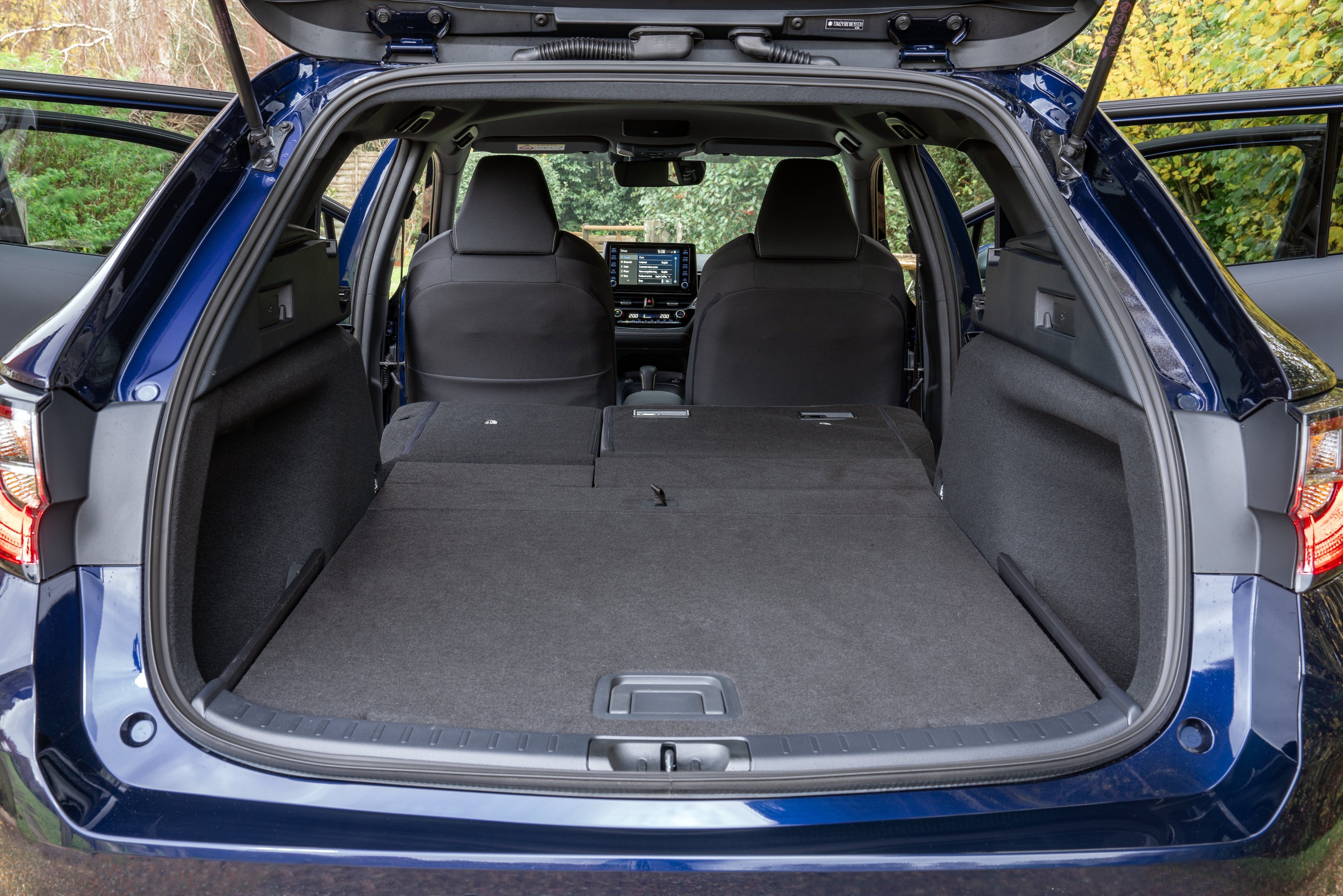Suzuki Swace: It virtually drives itself
Sometimes the most unassuming of motor cars can be the most fascinating, writes Sean O'Grady


I have driven some nice cars in 2022. Ferrari Roma; Alfa Romeo Stelvio Quadrifoglio, Bentley Bentayga, the adorable Alpine A110 South Beach, Range Rover, Lamborghini Huracan… nothing flash, you understand. They all had plenty to say for themselves. They had their attractions, and thrilling ones. But sometimes the most unassuming of motorcars can be the most fascinating. Ladies and gentlemen, I offer you the Suzuki Swace.
It’s an unfamiliar name attached to a very familiar-looking car, that being a Toyota Corolla Touring Sports, ie estate car (the Swace is an estate-only model, unlike the Corolla). The Swace is a prime and rather defiant example of what they call in the business “badge engineering” – the same vehicle in all important respects, with a few detail differences for marketing purposes.
So the Swace has the same reliable 1.3 litre engine as the Corolla, teamed with well-proven Toyota part-electric hybrid drive, same bodywork, same brakes, same airbags, same seats… in fact the only way of distinguishing the twins is the different front styling for the grille and bumper; the steering wheel and, well, the badges. Indeed as far as I can tell, it looks very much as though they just stuck a Suzuki “S” over the Toyota logo on the tailgate – not even bothering to swap them out.
THE SPEC
Suzuki Swace 1.8 Hybrid SZ5
Price: £29,899 (as tested; range starts at £26,810)
Engine capacity: 1.8l petrol 4-cyl, 1-sp auto + elec motor
Power output (PS): 102
Top speed (mph): 112
0 to 60 (seconds): 11.1
Fuel economy (mpg): 54.2
CO2 emissions (WLTP, g/km): 103
To be fair, the Toyota has a much longer warranty, but given that the cars are identical and unlikely to break down ever, it’s a bit academic. Toyota has more dealers, but Suzuki enjoys a superlative reputation. The real point here, and why badge engineering can work to the advantage of the canny buyer, is that the Suzuki Swace will be about a grand cheaper than its Toyota sibling, though bargains of any kind are harder to come by these days, short of new stock as the market is. Fascinating, no?
So are the corporate roots of the Swace – the growing and regrettable consolidation of what used to be Japan’s magnificent automotive ecosystem. From the 1960s to the 1990s European and American firms were in a protracted merger frenzy, with great individualistic marques such as Saab, Citroen and Lancia squashed, boiled and gobbled up.
By contrast, Japanese makes almost remained staunchly independent: Toyota, Honda, Nissan, Mitsubishi, Isuzu, Mazda, Subaru, Daihatsu and Suzuki all occupied their own space and niches, often as not under benign government direction. Often quirky, they added choice – for every uninspiring Sunny or Carisma there was a boxer-engined four-wheel drive Impreza, the cute Copen, the louche Isuzu Piazza. They excited us, but now some have exited the UK market.

Under the pressures of globalisation, competition and over-capacity, their separate personas of the Japanese brands are eroding, through cross-shareholdings and joint ventures, and it’s the giant Toyota that is stuffing them, ever so delicately, into its maw. Hence the rash of new Suzuki hybrid models – why try and reinvent the wheel, or Toyota’s hybrid technology?
More industrial fascination there. Even driving the Swace brings its own rewards. When I was in the Ferrari I was an ageing playboy. In the Bentley, a laird who owned a thousand acres, a river and a distillery. In the Swace, I was an Uber driver, and it is almost as if the Swace/Corolla was built with the minicab trade in mind. There’s plenty of practical space (598 litres in the flat-floored back), the interior is dull but hard-wearing, and its hybrid drive means it’s silent at low speeds.

It’s got parking sensors front and rear, and you can plug your phone in to make calls and use your apps (no built-in sat nav). It’s very good around town, and it’s able to keep up with the traffic. As it does so, however, we find the usual Toyota hybrid drone from the transmission makes a lot of fuss if you put your foot down. A car built for economy above performance I have to say.
But one shouldn’t get too snobby. Anyone can. Anyone can make a supercar if the price is no object, but to create something as advanced, reliable and safe as a Suzuki Swace would have been considered fantasy a decade or two ago: with the cruise control and lane-assist system the Swace virtually drives itself. And all for a very reasonable price. Badge engineering can be a good thing if the rest of the engineering is as impressive as it is on a Swace. In that sense, it’s as wondrous as any Lambo. Happy new year.
Join our commenting forum
Join thought-provoking conversations, follow other Independent readers and see their replies
Comments
Bookmark popover
Removed from bookmarks